Have you ever explored the realm of sweet stiff sourdough starters? The diverse universe of sourdough offers limitless possibilities for creative baking. Among these possibilities, a sweet stiff starter stands out especially when it comes to sweet recipes. These starters prove exceptionally versatile in crafting delectable treats like cinnamon rolls, brioche, or even a traditional sourdough loaf ensuring no sourdough tang.
The beauty lies in their simplicity, requiring just an active sourdough starter, flour, water, and sugar. Additionally, they require no maintenance and are typically made for a one-time use.
This comprehensive recipe and informative article aims to address all your queries about crafting a sweet starter. If you’re eager to embark on this culinary adventure, your search ends here!
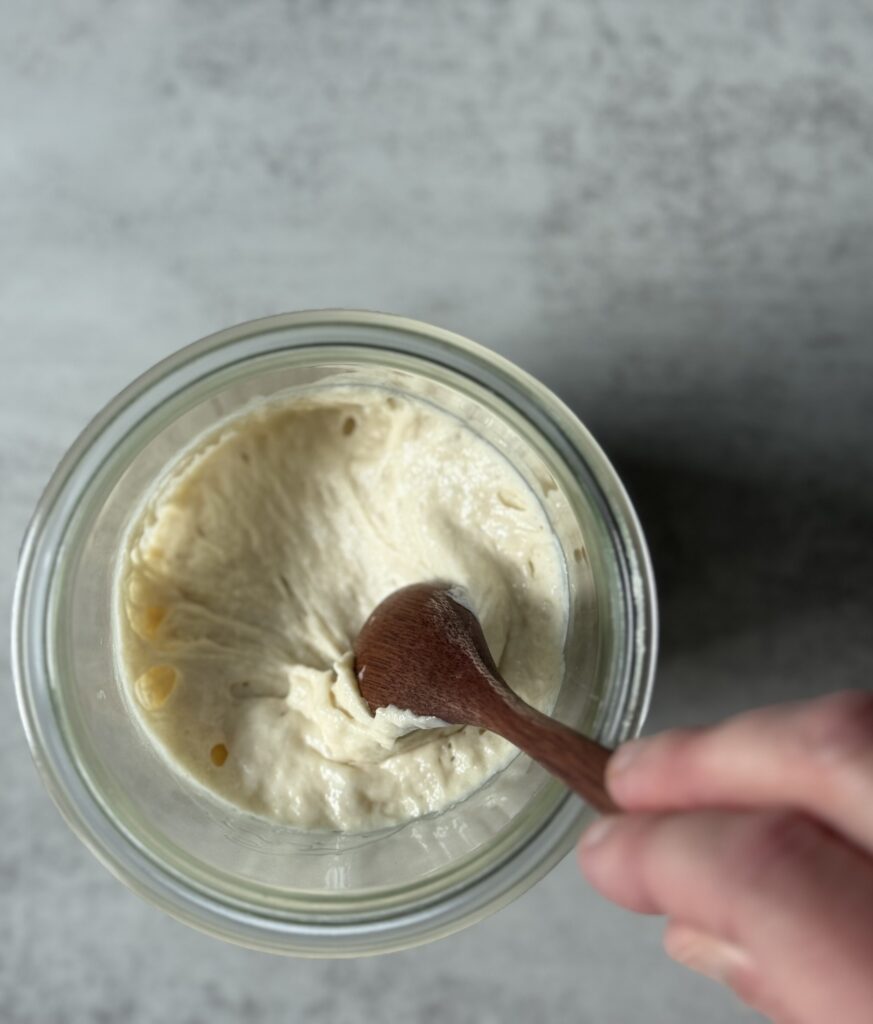
- What is a sweet stiff starter?
- Why use them?
- Do I have to maintain a sweet starter?
- How do I maintain a sweet stiff sourdough starter?
- What do I do with the leftover starter?
- Alternative sweet stiff starter conversions
- Timing your sweet starter
- Visual signs Your Sweet Starter is Ready:
- Can I use honey instead of sugar?
- Video comparing honey vs. sugar in sweet starters
- Why I love this recipe:
- Tips for success:
- My go-to sweet stiff sourdough starter recipe
What is a sweet stiff starter?
A sweet stiff sourdough starter is a type of sourdough starter that is characterized by its low hydration and sweetness. Stiff starters typically have around 40-65% hydration, which makes them thicker and more dough-like in texture. The sweetness comes from the sugar and the natural fermentation process of the starter, which produces sugars that give the dough a sweet flavor. This ultimately mutes that notable sourdough tang that isn’t always desired in sweet recipes.
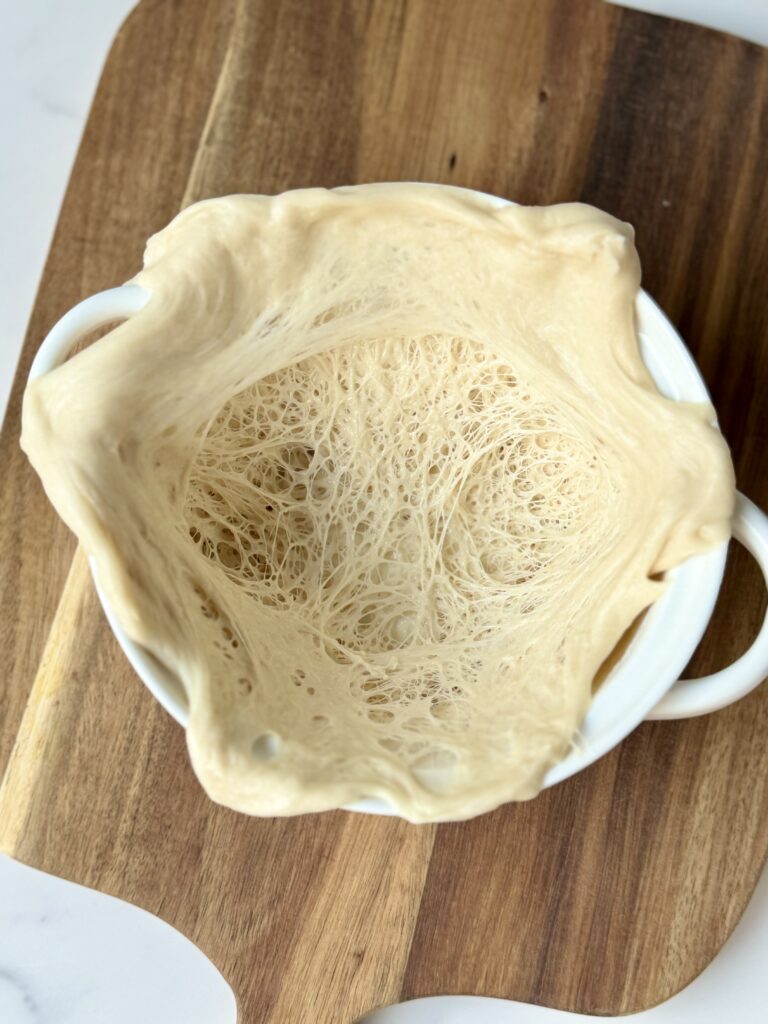
Why use them?
Sweet stiff sourdough starters are great to use in sweet recipes where you don’t want the sourdough tang to overpower the flavor. They also produce a denser texture, which is lovely in sweet recipes. The best part about it, is it still holds all that wonderful gut nutrition!
Do I have to maintain a sweet starter?
The answer is no. Think of a sweet stiff starter as a levain where you are taking from your active, mature starter and creating a rising agent for your bread by mixing it with flour, water, & sugar. You are making it once and using it for your recipe only.
How do I maintain a sweet stiff sourdough starter?
If you would like to maintain a sweet stiff starter because you are baking often with it, here are some tips and how to’s to keep it alive and active.
Feeding schedule:
Room Temperature (Frequent Use):
- Feed the starter every 12–24 hours, depending on your kitchen’s temperature. Warmer environments require more frequent feedings.
- Discard half of the starter before each feeding to avoid overgrowth and maintain balance.
Refrigeration (Infrequent Use):
- If you bake less often, store the starter in the refrigerator and feed it once a week.
- Before baking, remove it from the fridge, let it come to room temperature, and feed it 1–2 times to reactivate.
Tips for Maintaining Sweetness:
- Always include sugar in the feeding to maintain the sweet profile. Adjust the amount of sugar slightly based on the sweetness level you prefer.
- Over time, the natural fermentation process can make the starter less sweet due to the microbes consuming the sugar. Regular feedings help keep it balanced.
Example feeding:
1:2:0.75:0.5 (Starter:Flour:Water:Sugar) by weight.
If you have 50 grams of starter:
- 100g all-purpose flour
- 38g water (slightly less than 3/8 cup)
- 25g sugar (2 tablespoons)
What do I do with the leftover starter?
This recipe does make around 300 grams of sweet starter and you most likely will have some leftovers.
I always store any leftover starter in the fridge in an airtight container for up to 1 week. Think of it as a sweet discard and you can use it in various discard recipes!
Some recommended recipes:
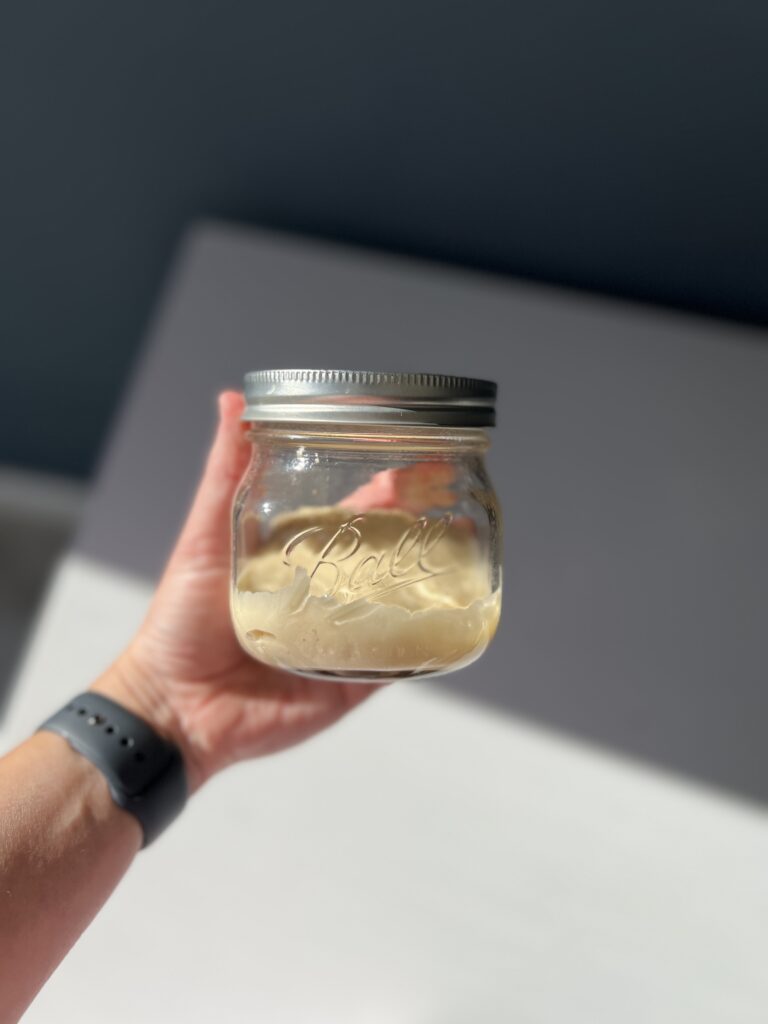
Alternative sweet stiff starter conversions
Any recipe that calls for a 100% hydration sourdough starter can be converted using a sweet starter. If you want to make a more exact sweet levain take a look at the common ratios below.
Keep in mind when using a sweet stiff starter in a recipe that is designed around a 100% hydration starter, you will need to decrease the amount of flour. I usually start by decreasing the flour by half a cup.
Use a 1:3:0.5-0.6 ratio (starter, flour, & water)
My suggestion for creating a sweet stiff levain is to use a ratio of 1:3:0.5-0.6 (1 part starter; 3 parts flour; 50-60% hydration) and keeping the sugar around the same amount as the starter. Don’t worry I’ll provide some examples.
Below are some examples of standard amounts commonly used in recipes. There will always be about 5-10 grams of extra starter. It is better to have a little more than less.
- For 100 grams: 15 grams starter; 60 grams AP flour; 30 grams water; 15 grams sugar
- For 150 grams: 20 grams starter; 90 grams AP flour; 45 grams water; 20 grams sugar
- For 200 grams: 25 grams starter; 120 grams AP flour; 60 grams water; 25 grams sugar
- For 250 grams: 30 grams starter; 150 grams AP flour; 75 grams water; 30 grams sugar
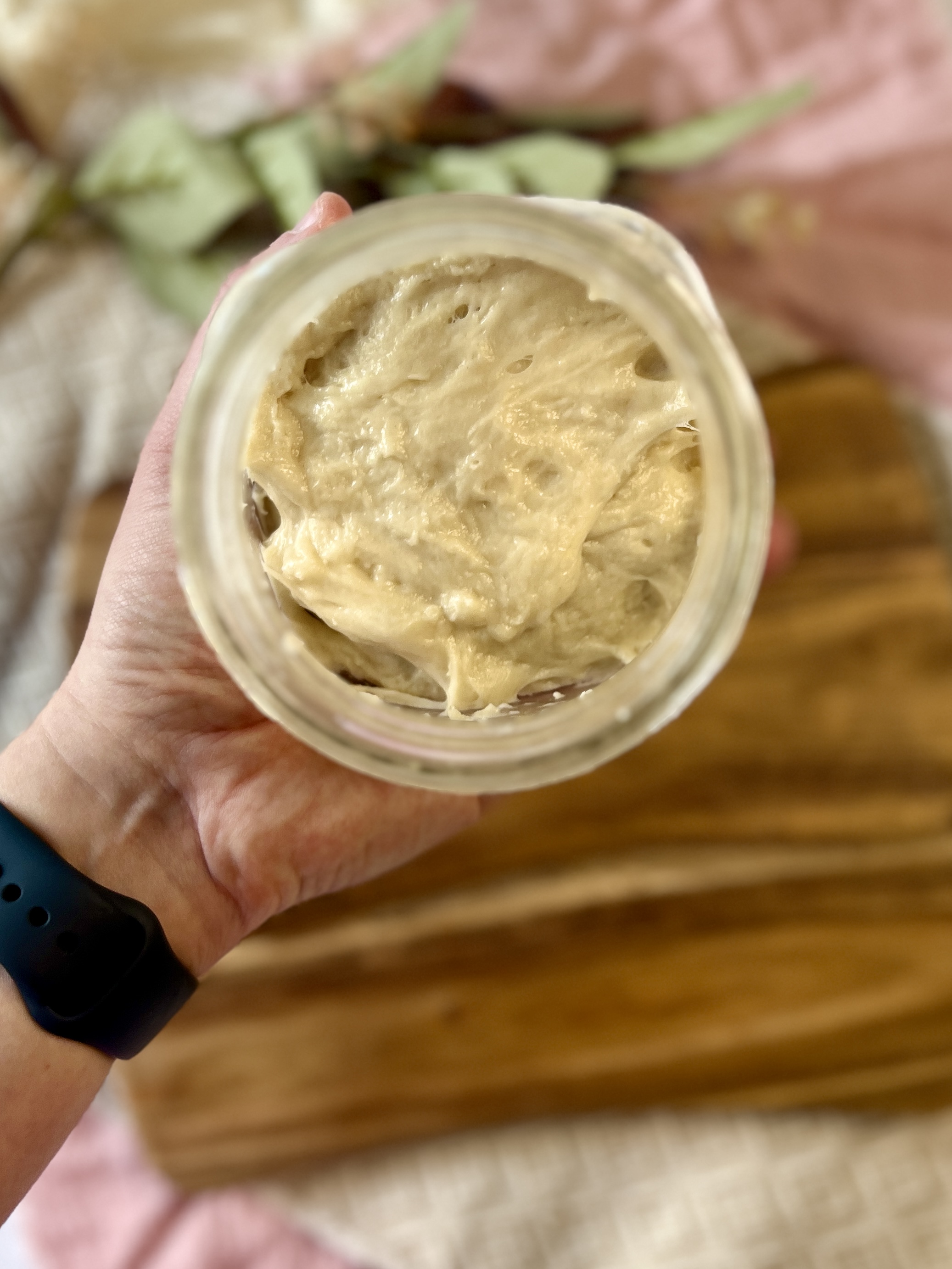
Timing your sweet starter
When making a sweet stiff sourdough starter it will typically take 8-12 hours to hit its peak or be ready for use in a recipe. This can vary depending on the season and temperature in your environment.
I will usually make my sweet starter in the evening and mix the dough in the morning.
You can also make a sweet starter in the morning and mix your dough by evening if it is an overnight recipe.
Essentially give yourself that 8-12 hour window before planning to mix a dough.
Fermentation tips:
The fermentation time of a sweet stiff starter can vary based on environmental factors like room temperature and humidity. Warmer temperatures (75–80°F) will speed up fermentation, while cooler temperatures (65–70°F) will slow it down.
If your kitchen is on the cooler side, try placing the starter in a warm spot, such as near an oven with the light on, on top of the fridge, or in a proofing box set to a consistent temperature.
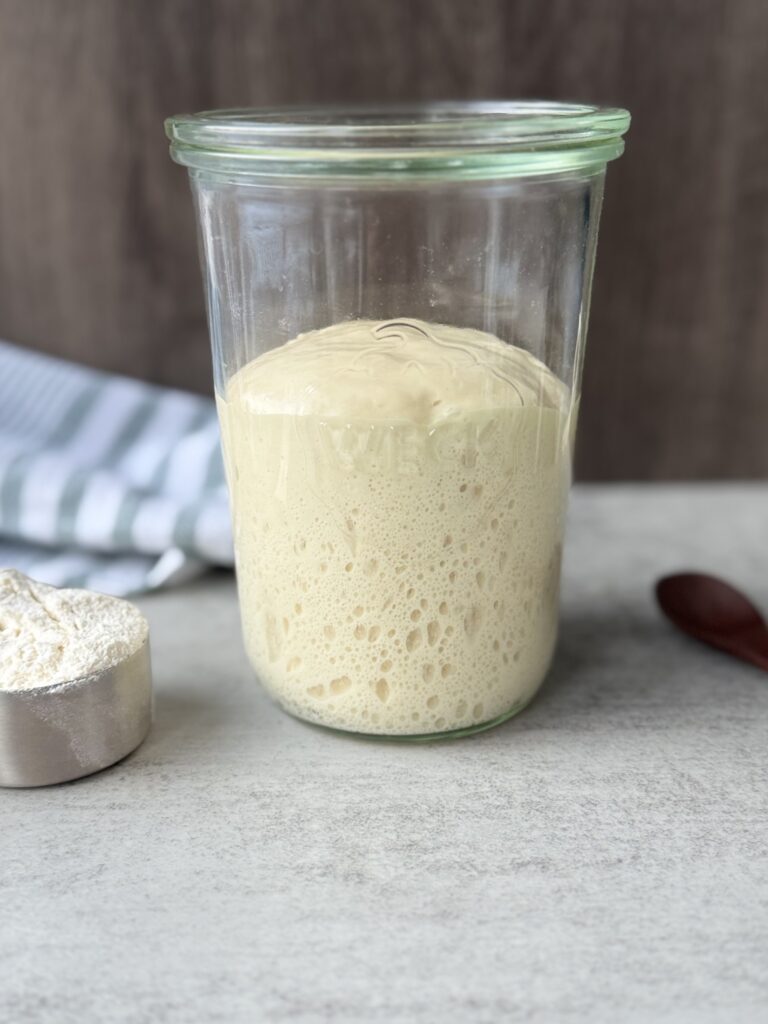
Visual signs Your Sweet Starter is Ready:
- Domed Surface: The top of the starter will form a smooth, domed shape, indicating active fermentation.
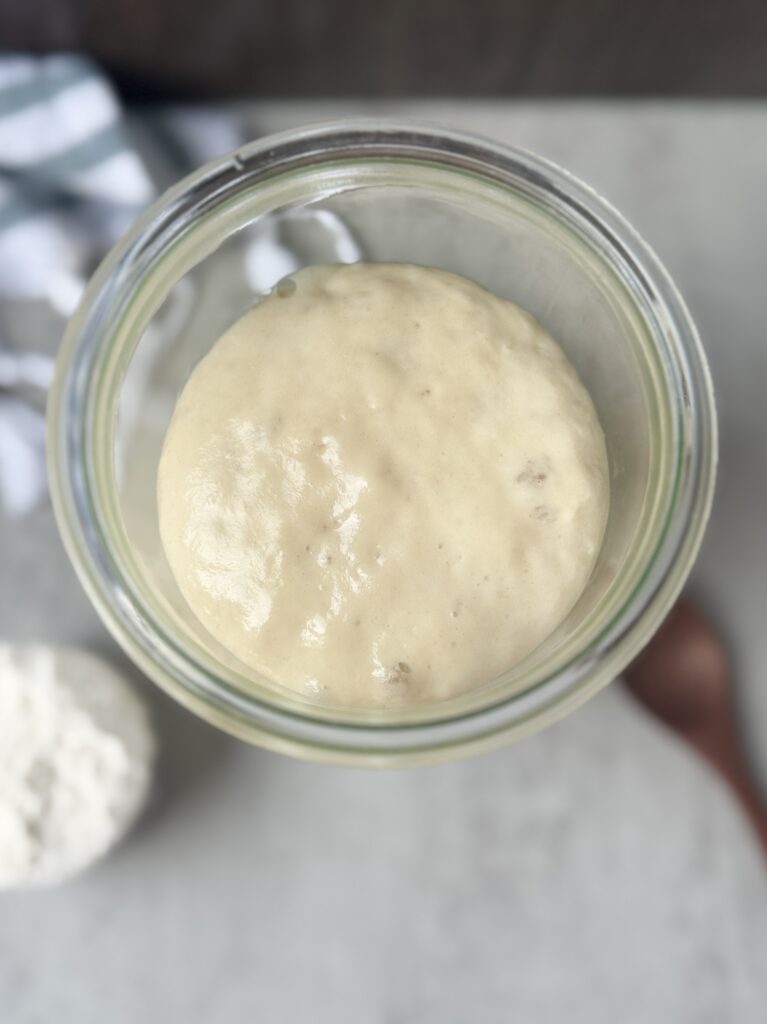
- Bubbles: You’ll see small bubbles scattered throughout the starter, a sign that the yeast and bacteria are producing gas.
- Gluten Strands: When you pull back a section of the starter with your fingers or a spoon, you’ll notice stretchy gluten strands—a clear indicator of developed structure and fermentation.
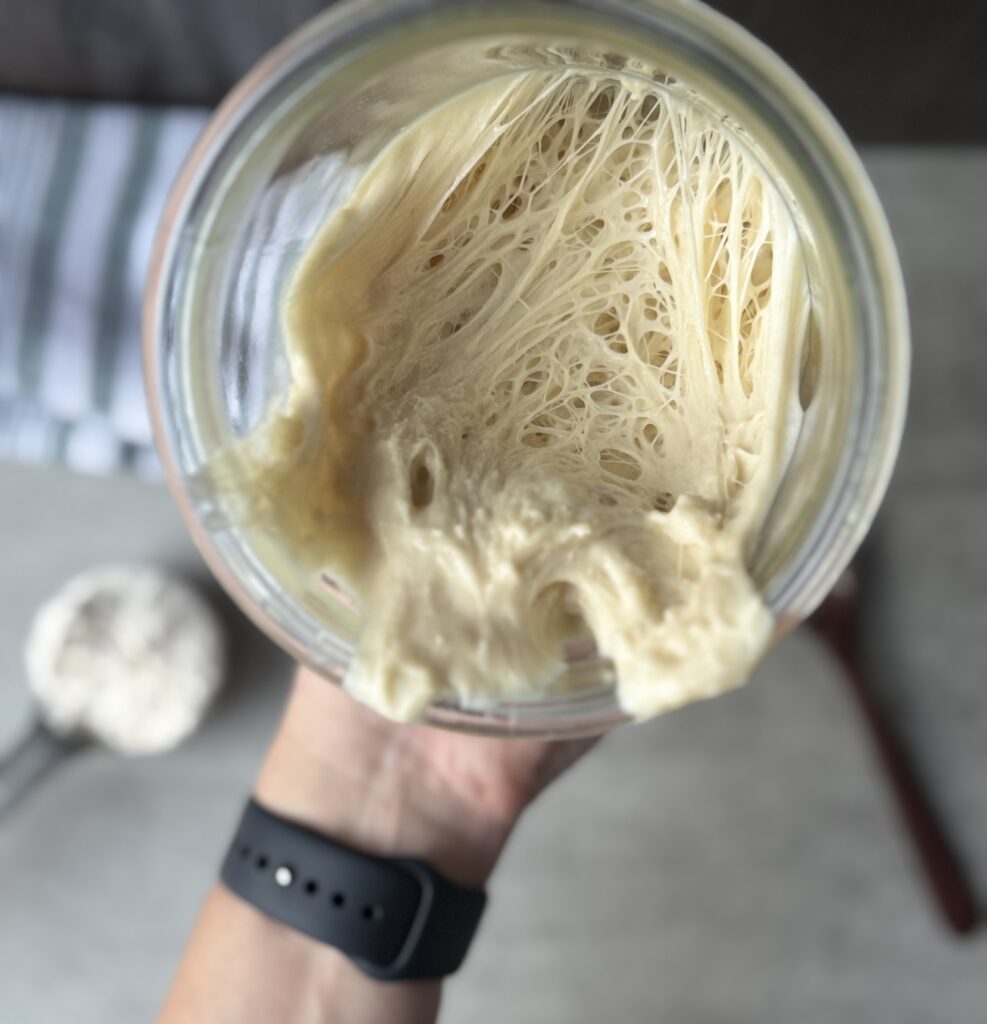
Video of sweet stiff starters rising
Can I use honey instead of sugar?
Certainly!
Honey is a fantastic alternative to sugar in a sweet stiff starter, adding subtle floral notes and enhancing fermentation. Since honey is about 17-20% water, it’s best to withhold 10-15 grams of water per 100 grams of honey to maintain the starter’s consistency.
Honey’s natural enzymes and fructose content encourage a lively fermentation, often leading to a more sustained rise compared to sugar. It also brings antimicrobial properties that can slightly slow bacterial activity at first but ultimately supports a balanced fermentation.
The result? A beautifully complex flavor that pairs perfectly with enriched doughs like brioche, cinnamon rolls, and sweet sourdough bakes.
Video comparing honey vs. sugar in sweet starters
Why I love this recipe:
This is my go-to recipe for a few reasons:
- It is versatile and can be used in almost any recipe without having to make adjustments due to it being around 75% hydration.
- The ratios make for a vigorous rise and the sweetness balances perfectly with the sourdough.
- After making it a few times, it’s easy to memorize and can be a go-to without any extra steps or thought.
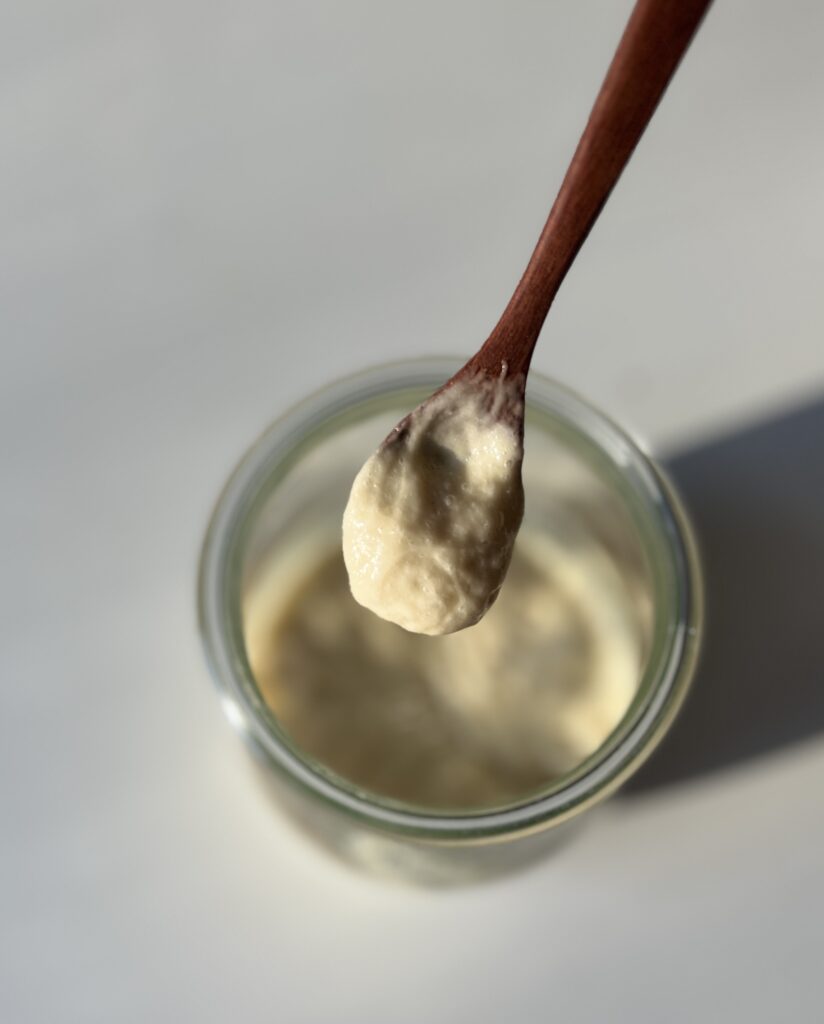
Tips for success:
- Use an active sourdough starter when mixing your sweet stiff starter. This means one that was fed within the past 12 hours. This will help with an optimal rise. However, I have used an unfed starter, it just needed more time to rise.
- Use a strong all-purpose flour when building the sweet starter. I use King Arthur’s organic all-purpose flour. Bread flour can be used too.
- If you are noticing a sluggish rise in the sweet starter, I recommend placing it somewhere warm like in the oven with the light on. Or a microwave with a bowl of hot water next to it.
My go-to sweet stiff sourdough starter recipe
A few notes:
- Hydration: While this stiff starter may seem higher in hydration (75%), the inclusion of extra sugar significantly influences its texture. Sugar binds water, effectively reducing the “perceived hydration,” so the starter behaves more like a traditional stiff starter despite the higher water content.
- Why these ratios work: The slight increase in hydration helps balance the slower fermentation caused by the sugar. This ensures the starter is active enough to leaven sweet doughs while maintaining the structure needed for enriched recipes.
- Versatility: The increased hydration makes it versatile to use in almost any recipe that uses a 100% hydration sourdough starter without having to make adjustments. However, feel free to adjust this starter to your preference. For a stiffer version decrease the water to 75 grams.
Tip: Keep in mind gram measurements can vary due to different types of flour and temperature of water etc. Thankfully this recipe is very forgiving!
Ingredients:
- 50 grams (1/4 cup) of active sourdough starter
- 50 grams (1/4 cup) of sugar
- 130 grams (1 cup) of all-purpose flour or bread flour
- 75-100 grams (slightly less than 1/2 cup) of water (adjust based on your preference)
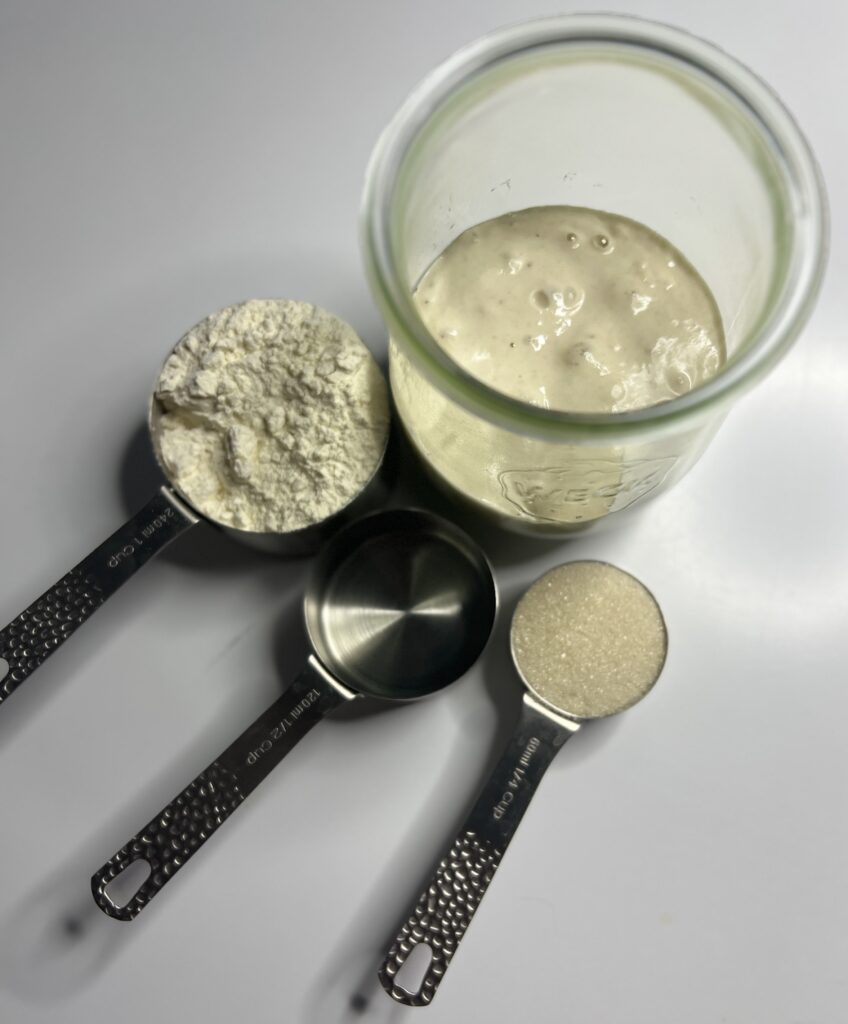
Equipment:
- Glass jar with a loose lid
- Fork or silicone spatula
- Food scale (optional)
- Measuring cups if using
Instructions:
- To a clean jar add the active sourdough starter and sugar.
- Next, add the water (start with 75 grams) and stir until the water becomes “milky.”
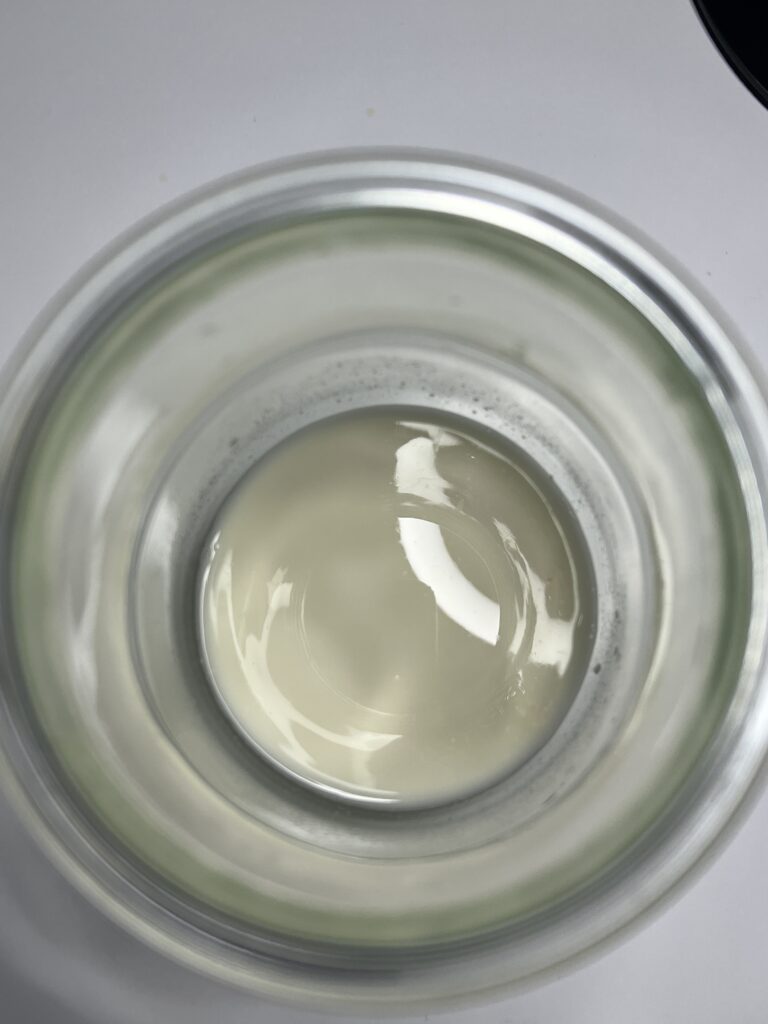
- Lastly, add the flour and mix until no traces of flour are left.
*You can add a touch more water if you’d like a looser, more hydrated starter-it makes for a versatile base that works beautifully in most recipes.
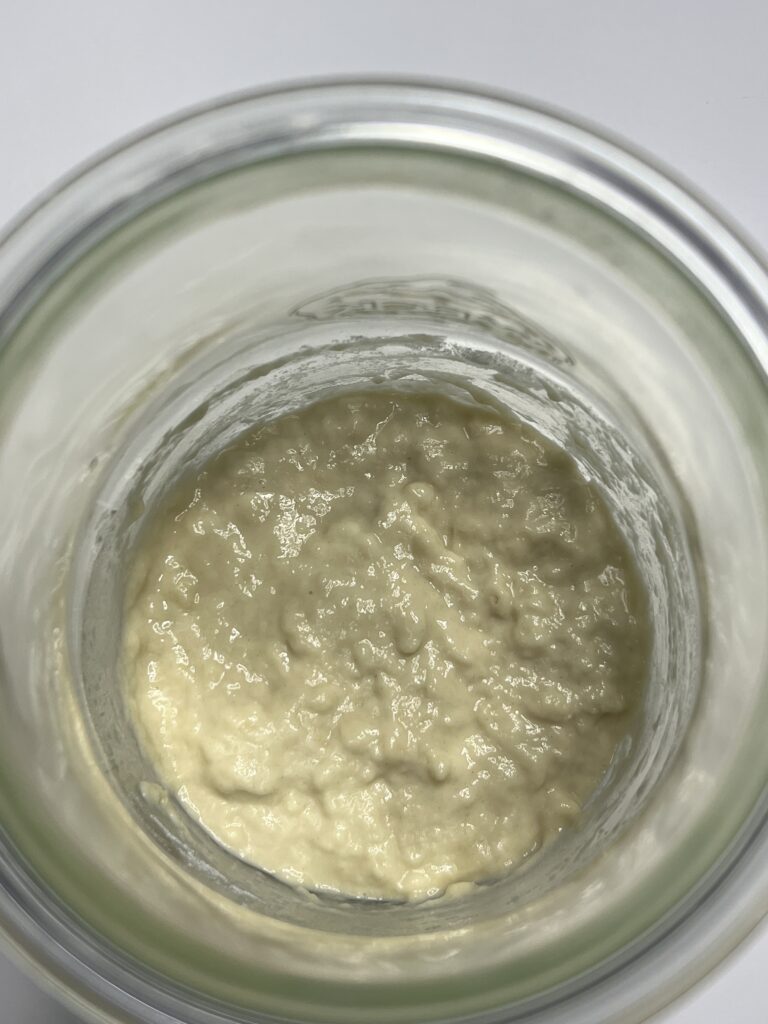
- Cover the jar loosely with the cap and the starter should double in size within 8-12 hours.
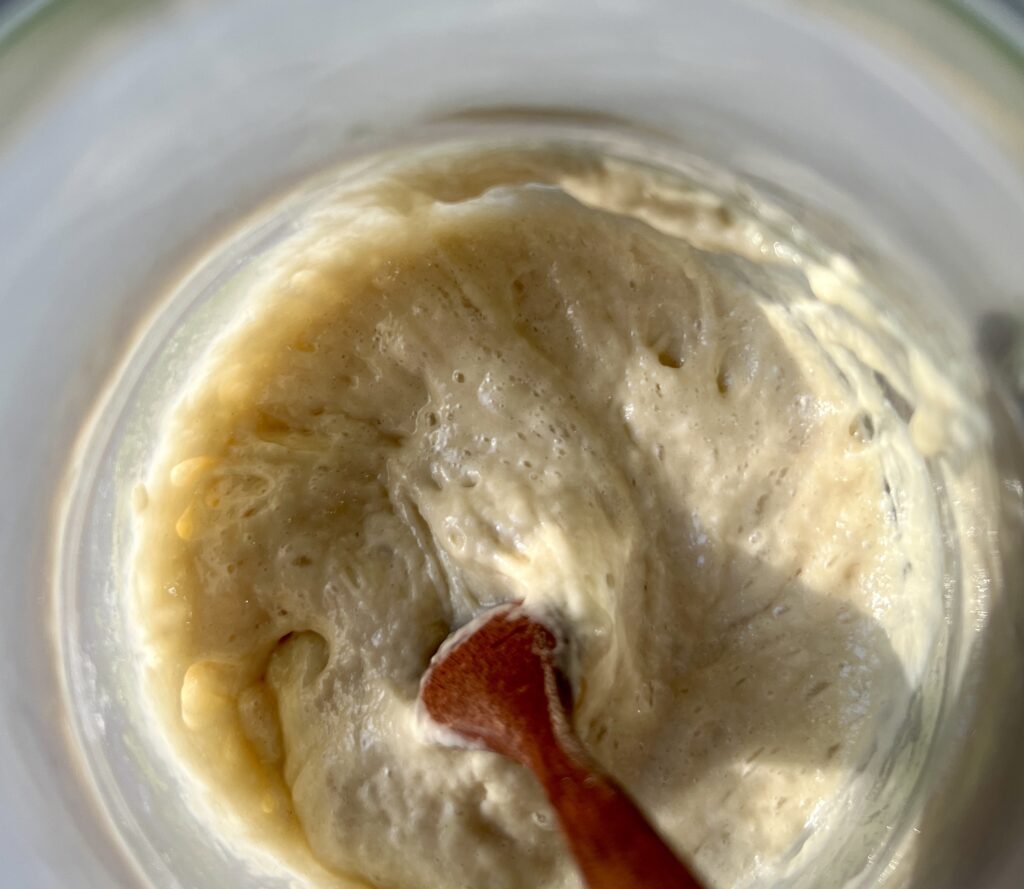
Sourdough recipes to try with a sweet starter:
- Sourdough Cinnamon Rolls (soft & not too sweet!)
- Easy Sourdough Donuts
- Orange Vanilla Sourdough Brioche Rolls
- Sourdough Hawaiian Rolls (soft & sweet!)
If you liked this article you may also like Amish Friendship Sourdough Starter (milk starter).
Sweet Stiff Sourdough Starter
Equipment
- Glass jar with loose a lid
- Fork or silicone spatula
- Food scale (optional)
- Measuring cups if using
Ingredients
- 50 grams (1/4 cup) active sourdough starter
- 50 grams (1/4 cup) sugar
- 130 grams (1 cup) all-purpose flour or bread flour
- 75-100 grams (slightly less than 1/2 cup) water see notes for hydration levels
Instructions
- To a clean jar add the active sourdough starter and sugar.
- Next add the water (start with 75 grams) and stir until the water becomes "milky."
- Lastly, add the flour and mix until no traces of flour are left. *You can add a touch more water if you’d like a looser, more hydrated starter-it makes for a versatile base that works beautifully in most recipes.
- Cover the jar loosely with the cap and the starter should double in size within 8-12 hours (see notes if the starter is not rising).
- Any leftover sweet starter can be stored in the fridge in an airtight container for up to 1 week and used in various sweet sourdough discard recipes.
Notes
-
- While this stiff starter may seem higher in hydration (75%), the inclusion of extra sugar significantly influences its texture. Sugar binds water, effectively reducing the “perceived hydration,” so the starter behaves more like a traditional stiff starter despite the higher water content.
-
- Why these ratios work: The slight increase in hydration helps balance the slower fermentation caused by the sugar. This ensures the starter is active enough to leaven sweet doughs while maintaining the structure needed for enriched recipes.
-
- Versatility: The increased hydration makes it versatile to use in almost any recipe that uses a 100% hydration sourdough starter without having to make adjustments. However, feel free to adjust this starter to your preference. For a stiffer version decrease the water to 75 grams.
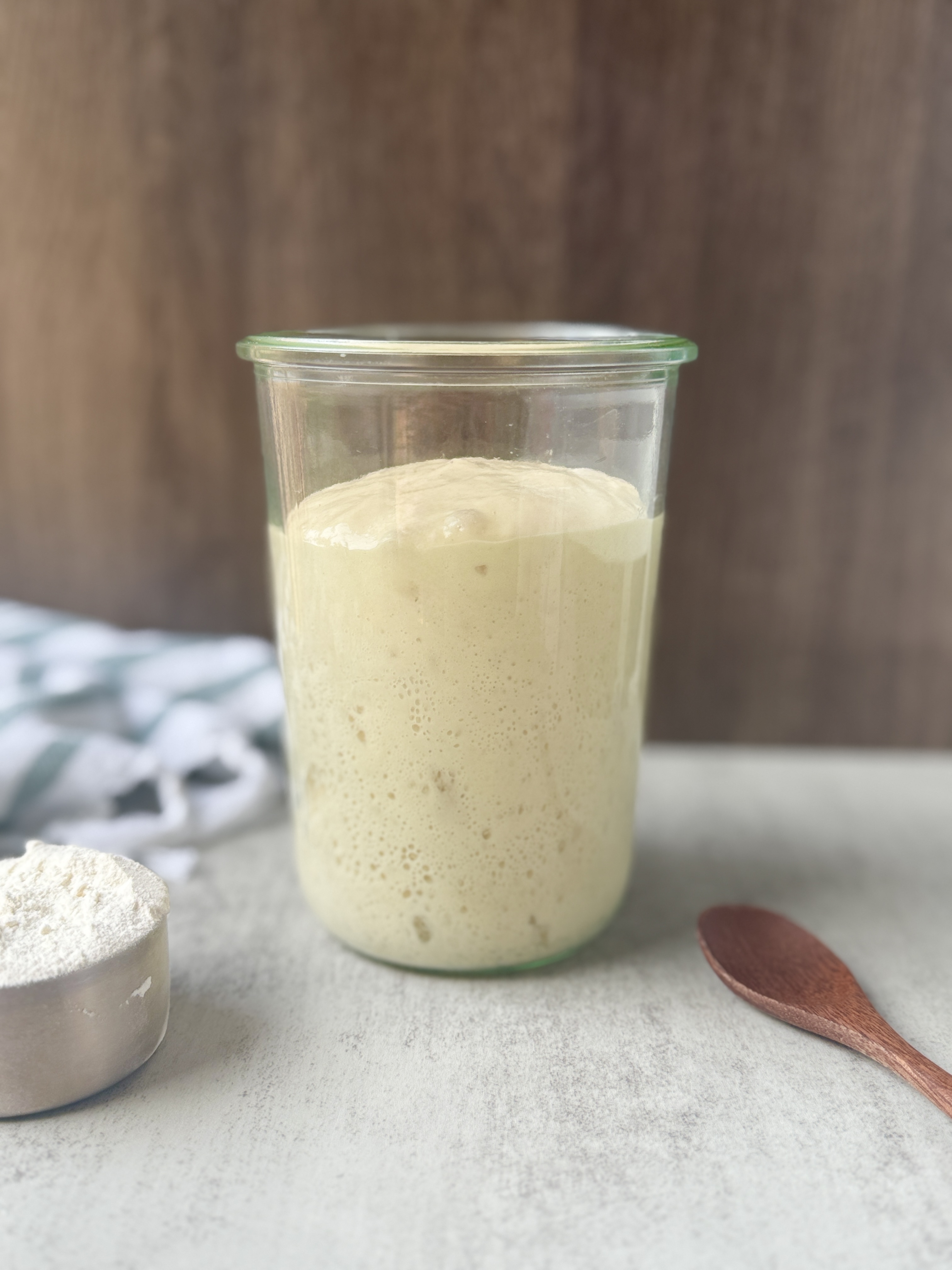

Leave a Comment & Rate the Recipe